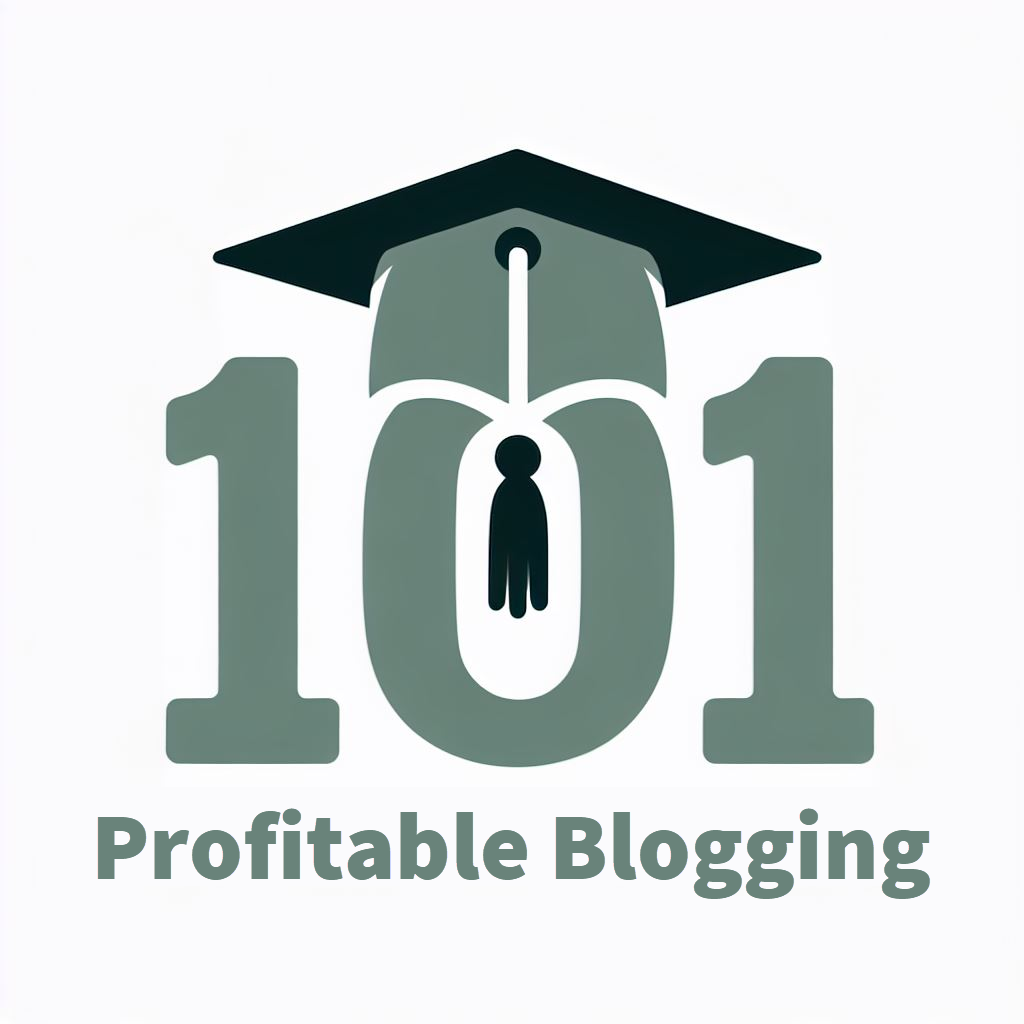From Beginner to Blogger Boss: Your Profitable Blogging Roadmap
As a new blogger, you've probably encountered the overwhelming task of choosing the perfect niche for your blog. You may have a passion for multiple topics, but how do you decide which one will resonate most with your audience and bring in profits?
Understanding your niche is just the beginning of your blogging journey. Let's uncover the essential steps that will lead you from a novice blogger to a successful entrepreneur in the digital world.
Finding Your Blog Niche
To create a successful and profitable blog, the first important step is finding your blog niche. Your niche is like your blog's specialty, the unique angle that sets you apart from the rest. It's important to choose a niche that you're passionate about and that resonates with your target audience. Think about what you love, what you're knowledgeable about, and what others are interested in learning from you.
When selecting your niche, consider the market demand and competition. You want a niche that has a large enough audience to attract readers and potential sponsors but isn't overly saturated with competitors. Finding the balance between passion and profitability is key.
Research what's currently trending in your niche and explore different angles to make your blog stand out. Remember, your niche can evolve over time as you grow and learn more about your audience's needs. Stay true to yourself and your interests while also keeping an eye on market trends to guarantee your blog remains relevant and engaging.
Setting Up Your Blog
Ready to bring your blog to life? Setting up your blog is an exciting step towards establishing your online presence and sharing your unique voice with the world. Here are three key elements to keep in mind as you start on this journey:
- Choose the Right Platform: Selecting the right blogging platform is important. WordPress, Blogger, and Wix are popular options that offer user-friendly interfaces and customizable features to suit your needs.
- Customize Your Design: Make your blog visually appealing by choosing a clean and professional design that reflects your brand. Customize the color scheme, fonts, and layout to create a cohesive look that resonates with your audience.
- Set Up Essential Pages: Create important pages such as an About Me page, Contact page, and Privacy Policy. These pages help build trust with your readers, provide important information about you and your blog, and make compliance with legal requirements.
Crafting Compelling Content
Craft compelling content that aims to be authentic and genuine with your audience and leaves a lasting impact on their minds. Your content should be engaging, informative, and valuable to your readers. Start by understanding your target audience's needs, interests, and pain points. Tailor your content to address these aspects, offering solutions, inspiration, or entertainment that keeps them coming back for more.
To create compelling content, aim to achieve quality over quantity. Each piece you publish should be well-researched, well-written, and relevant to your niche. Use a mix of text, visuals, and multimedia to make your content visually appealing and engaging. Incorporate personal anecdotes or stories to make a connection with your audience on a deeper level.
Aim to be authentic and genuine in your writing. Share your unique perspective, opinions, and experiences to differentiate yourself from others in the blogosphere. Encourage feedback and comments from your readers to foster a sense of community and engagement. Remember, the key to crafting compelling content is to create value for your audience while staying true to your voice and brand.
Mastering SEO Basics
Enhance your blog's visibility and reach by mastering the basics of SEO to attract more organic traffic and grow your audience.
When it comes to SEO basics, focus on these key strategies:
- Keyword Research: Understand what your audience is searching for online and incorporate these keywords naturally into your blog content. Tools like Google Keyword Planner can help you identify relevant keywords with high search volumes.
- Optimizing Meta Tags: Craft compelling meta titles and descriptions that accurately reflect your content and entice users to click through to your blog. These tags are important for search engine rankings and increasing click-through rates.
- Quality Content: Create high-quality, valuable content that's relevant to your audience's interests. Search engines prioritize websites that offer useful information, so focus on creating engaging posts that keep readers coming back for more.
Building Your Audience
To effectively build your audience for a profitable blog, understanding your target demographic and tailoring your content to their preferences is key. Identifying who your audience is, what they're interested in, and how they consume content will guide your blogging strategy. Engage with your audience through social media, email newsletters, and by responding to comments on your blog. Encourage interaction by asking questions, running polls, and hosting giveaways to keep them coming back for more.
Quality content is essential in attracting and retaining your audience. Create posts that provide value, solve problems, entertain, or inspire. Importance is also vital; establish a regular posting schedule to keep your audience engaged and coming back for more. Utilize analytics to track what content performs best and adjust your strategy accordingly.
Building your audience takes time and effort, but by staying authentic, engaging, and consistent, you can cultivate a loyal following that will help make your blog profitable in the long run.
Monetization Strategies
Monetizing your blog requires strategic planning and creative thinking to maximize your revenue potential. As you begin on this journey, consider the following monetization strategies to help you turn your blog into a profitable venture:
- Affiliate Marketing: Partnering with companies to promote their products or services on your blog can be a lucrative way to earn passive income. By including affiliate links in your content, you can earn a commission for every sale or lead generated through your referral.
- Sponsored Content: Collaborating with brands for sponsored posts or reviews can provide a steady stream of income. Make sure that the sponsored content aligns with your blog's niche and audience to maintain authenticity and credibility.
- Digital Products: Create and sell digital products such as e-books, online courses, or printables related to your blog content. This allows you to monetize your expertise and provide value to your audience while generating revenue.
Email Marketing Essentials
As you focus on maximizing your blog's revenue potential, a key aspect to ponder is leveraging Email Marketing Essentials to engage your audience and drive conversions effectively. Building an email list is like creating a direct line of communication with your readers, allowing you to nurture relationships and showcase your expertise.
Start by offering valuable incentives, such as exclusive content or discounts, to entice visitors to subscribe. Once you have a list, craft compelling and personalized emails that resonate with your audience's interests and needs. Remember, the goal isn't just to sell but to build trust and provide value consistently.
Segmenting your email list based on behavior or interests can further enhance the effectiveness of your campaigns. Tailoring content to specific segments can lead to higher open rates and click-through rates. Additionally, regularly analyzing metrics like open rates, click-through rates, and conversions will help you refine your email strategies for best results.
Social Media Promotion
Enhance your blog's reach and engagement by strategically leveraging social media promotion. Social media is a powerful tool to connect with your audience, drive traffic to your blog, and increase your online presence. Here are three key strategies to make the most out of your social media promotion:
- Consistent Posting: Regularly share your blog content across different social media platforms to keep your audience engaged and informed. Create a content calendar to schedule posts in advance and maintain a steady flow of updates.
- Engagement with Followers: Interact with your followers by responding to comments, messages, and mentions. Encourage discussions, ask questions, and seek feedback to build a strong relationship with your audience.
- Visual Content Creation: Use eye-catching graphics, videos, and images to make your social media posts stand out. Visual content tends to grab more attention and increase engagement rates, helping you attract more visitors to your blog.
Collaborating With Other Bloggers
To maximize your blog's growth and reach, collaborating with other bloggers can be a highly effective strategy. By teaming up with like-minded bloggers, you can tap into each other's audiences, share valuable insights, and create engaging content that resonates with a wider range of readers.
One way to collaborate is through guest posting on each other's blogs. This allows you to showcase your expertise to a new audience while providing fresh perspectives for your readers.
Another powerful collaboration method is participating in blogger roundups or interviews. This not only introduces you to a new audience but also helps in building relationships within the blogging community.
Additionally, co-hosting webinars or podcasts with other bloggers can be a great way to offer unique content and attract a broader audience.
Analyzing and Optimizing Performance
For effective growth and success of your blog, understanding and optimizing its performance is crucial. By analyzing and fine-tuning your blog's performance, you can guarantee that you're on the right track to becoming a successful blogger.
Here are three essential strategies to help you optimize your blog's performance:
- Track Your Analytics: Utilize tools like Google Analytics to monitor your blog's traffic, audience demographics, popular content, and more. Understanding these metrics will help you make informed decisions to enhance your blog's performance.
- Optimize SEO: Implement effective SEO strategies to improve your blog's visibility on search engines. Conduct keyword research, optimize meta tags, and create high-quality content to attract more organic traffic to your blog.
- Engage with Your Audience: Interact with your readers through comments, social media, and email newsletters. Building a strong relationship with your audience can increase engagement, loyalty, and ultimately, the success of your blog.
Scaling Your Blog Business
To elevate your blog business to the next level, focus on strategic scalability measures to maximize growth and profitability. One key aspect of scaling your blog business is diversifying your income streams. Instead of solely relying on one source of revenue, explore options like affiliate marketing, sponsored content, digital products, or online courses. By diversifying your income streams, you can create a more essential and sustainable business model.
Another important step in scaling your blog business is outsourcing tasks that are time-consuming or outside your expertise. Consider hiring virtual assistants, content writers, or graphic designers to help with various aspects of your blog. This allows you to focus on high-impact activities that drive growth and revenue.
Additionally, prioritize building strong relationships with your audience and collaborating with other bloggers or influencers in your niche. By expanding your network and leveraging the audiences of others, you can increase your reach and attract more traffic to your blog. Remember, scalability is about setting the stage for long-term success and creating a blog business that can thrive and evolve over time.
Frequently Asked Questions
How Can I Deal With Negative Comments and Criticism on My Blog?
Dealing with negative comments and criticism on your blog can be tough. Remember, not all feedback is valid. Focus on constructive criticism, engage with your audience respectfully, and use negative comments as opportunities for growth and improvement.
What Are Some Common Mistakes That Beginner Bloggers Make and How Can I Avoid Them?
Avoid common mistakes like inconsistent posting, neglecting SEO, and disregarding audience engagement. Grab readers with engaging content, optimize for search engines, and interact with your audience. Stay focused, stay consistent, and watch your blog thrive.
How Can I Stay Motivated and Consistent With My Blogging Schedule?
Stay motivated by setting realistic goals, creating a routine, and celebrating small wins. Consistency comes from prioritizing your blog, planning content ahead, and finding inspiration in your niche. Remember, progress is key, not perfection.
What Are Some Effective Ways to Engage With My Audience and Foster a Sense of Community on My Blog?
Want to truly connect with your audience and build a community on your blog? Engage through interactive polls, respond to comments promptly, host live Q&A sessions, and create exclusive content for loyal followers. Your community awaits!
How Can I Protect My Blog Content From Plagiarism and Copyright Infringement?
To protect your blog content from plagiarism and copyright infringement, consider watermarking your images, using plagiarism checkers, adding copyright notices, and registering your work with the U.S. Copyright Office. Safeguarding your creations is essential.
Conclusion
You've paved the way from novice to blogging powerhouse with your roadmap to success. Your blog is like a well-oiled machine, attracting readers like bees to honey.
Keep crafting those compelling posts, mastering SEO, and building your audience. Social media is your friend, collaborations are your secret weapon, and analytics are your guiding star.
Keep climbing that blogging ladder, boss – the view from the top is worth every step of the journey.







